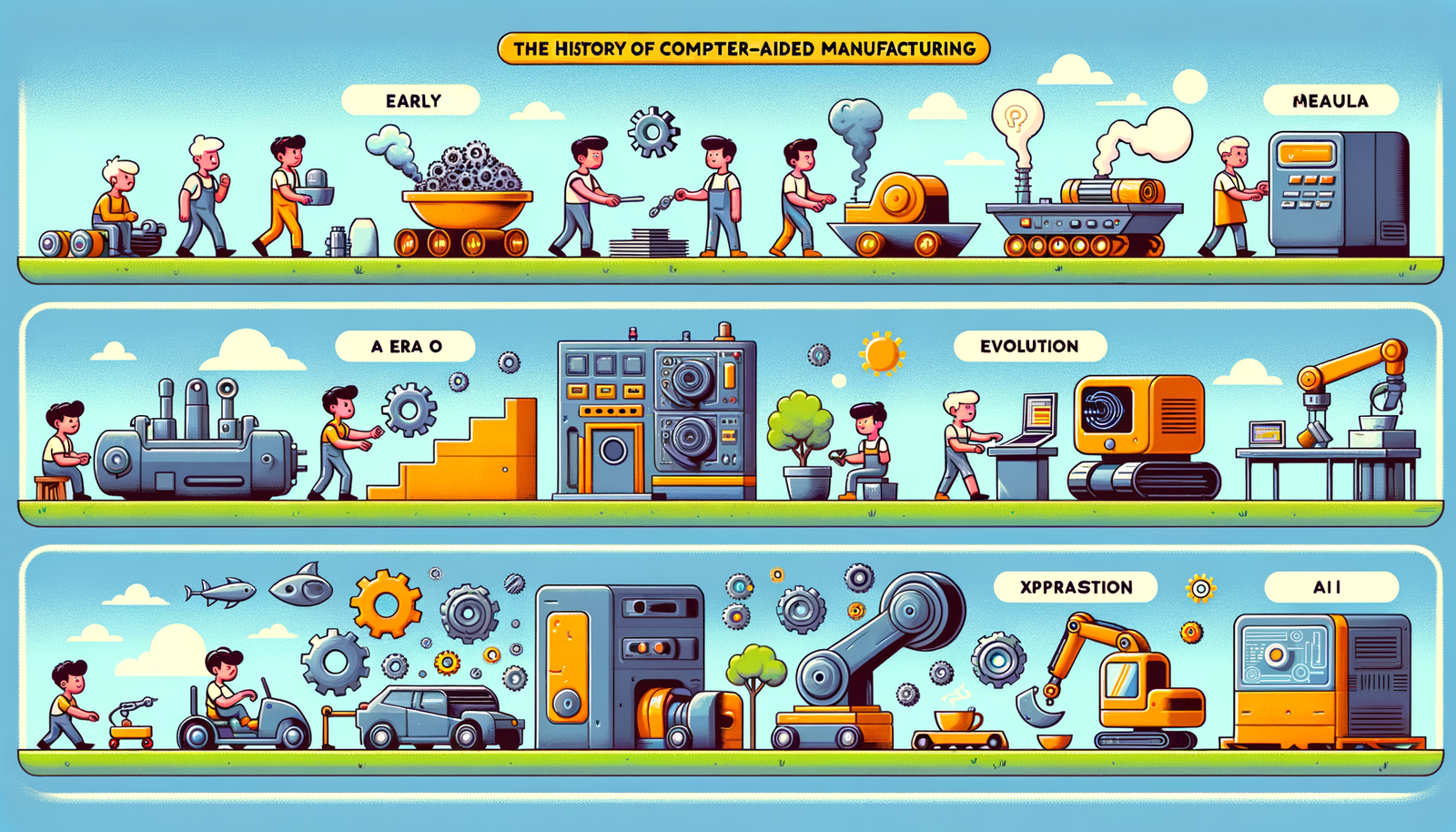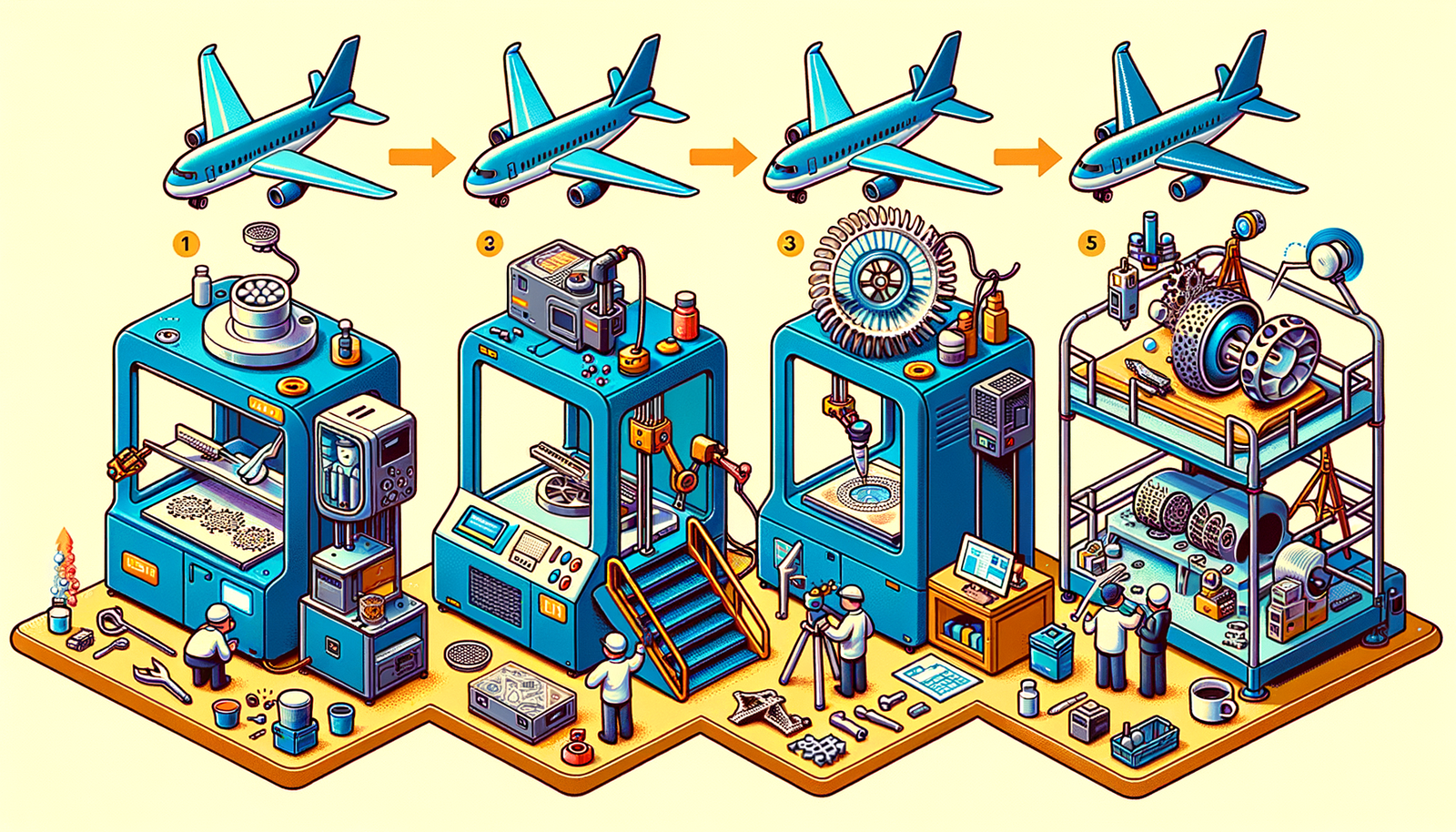Your Cart is Empty
Customer Testimonials
-
"Great customer service. The folks at Novedge were super helpful in navigating a somewhat complicated order including software upgrades and serial numbers in various stages of inactivity. They were friendly and helpful throughout the process.."
Ruben Ruckmark
"Quick & very helpful. We have been using Novedge for years and are very happy with their quick service when we need to make a purchase and excellent support resolving any issues."
Will Woodson
"Scott is the best. He reminds me about subscriptions dates, guides me in the correct direction for updates. He always responds promptly to me. He is literally the reason I continue to work with Novedge and will do so in the future."
Edward Mchugh
"Calvin Lok is “the man”. After my purchase of Sketchup 2021, he called me and provided step-by-step instructions to ease me through difficulties I was having with the setup of my new software."
Mike Borzage
Design Software History: The Evolution of CAM: From Early Beginnings to Future Trends in Manufacturing
August 14, 2024 5 min read


Section 1: Early Beginnings and Foundational Developments
Introduction to Computer-Aided Manufacturing (CAM)
Computer-Aided Manufacturing (CAM) emerged as a pivotal development in the history of manufacturing, distinguished from Computer-Aided Design (CAD) by its specific focus on automating the production process. While CAD deals with the creation and modification of design models, CAM translates these designs into actual physical products through automated machinery. The initial need for CAM arose from the desire to enhance precision, reduce human error, and improve the efficiency of manufacturing operations.
The Advent of G-Code
The origins of G-Code, a language essential for numerical control (NC) machines, can be traced back to the 1950s. Developed as a standardized language for automating machine tools, G-Code revolutionized manufacturing by providing a means to control the precise movements of machinery. This innovation was largely spearheaded by the efforts of the Massachusetts Institute of Technology's Servomechanisms Laboratory. The MIT Servomechanisms Laboratory, under the leadership of John T. Parsons and Richard Kegg, played a crucial role in the development of G-Code, which became the backbone of early NC systems. The significance of G-Code lies in its capacity to enable detailed instructions for machine operations, encompassing movements, speeds, and tool changes.
First Generation CAM Systems
The first generation of CAM systems saw the convergence of software and hardware advancements to automate manufacturing processes. Pioneering companies such as MIT, IBM, and General Motors were instrumental in these early developments. MIT's contributions included the refinement of numerical control principles and the creation of the first NC machine tools. IBM and General Motors, on the other hand, focused on the integration of computing technology with manufacturing equipment. Despite the groundbreaking nature of these initial systems, they faced significant challenges. Early CAM systems were plagued by limitations such as high costs, complex programming requirements, and limited computational capabilities. These challenges underscored the need for continued innovation and improvement in CAM technologies.
Section 2: Evolution into Advanced Toolpath Optimization
Transition to More Sophisticated CAM
The transition from basic G-Code systems to more sophisticated Computer Numerical Control (CNC) marked a significant milestone in the evolution of CAM. CNC introduced a higher level of automation and precision, allowing for more complex and intricate machining operations. Enhancements over basic G-Code systems included the incorporation of computer graphics to visualize tool paths, making it easier for engineers to plan and optimize machining processes. This era saw a shift towards more user-friendly interfaces and the integration of advanced computational techniques to improve the efficiency and accuracy of manufacturing operations.
Software Innovations
Several key companies spearheaded innovations in CAM software, contributing to the development of advanced algorithms for optimized toolpaths. Notable among these companies are CATIA, Siemens NX, and Mastercam. CATIA, developed by Dassault Systèmes, became renowned for its powerful capabilities in 3D modeling and simulation. Siemens NX, on the other hand, offered comprehensive solutions for product engineering and manufacturing, incorporating advanced CAM functionalities. Mastercam, developed by CNC Software, Inc., focused on providing user-friendly CAM solutions for a wide range of industries. These software innovations introduced the concept of 3D modeling into CAM processes, enabling more accurate simulations and efficient toolpath generation.
Notable Figures and Contributions
The evolution of CAM was significantly influenced by the contributions of pioneering engineers and software developers. Individuals such as Pierre Bézier, who developed the Bézier curve, played a crucial role in advancing computer graphics and modeling techniques. Academics and researchers from institutions like MIT, Stanford University, and the University of Cambridge conducted significant research that impacted the development of CAM technologies. Their work laid the foundation for the integration of complex mathematical models and algorithms into CAM systems, driving the industry towards more advanced and efficient manufacturing solutions.
Section 3: Integration and Standardization
CAM and CAD Integration
The emergence of integrated CAD/CAM systems represented a significant leap forward in the field of design and manufacturing. These systems seamlessly combined the capabilities of CAD and CAM, allowing for a more streamlined and efficient workflow from design to production. The integration of CAD and CAM offered numerous benefits, including improved accuracy, reduced lead times, and enhanced collaboration between design and manufacturing teams. Leading the way in this integration were companies such as Autodesk and Dassault Systèmes. Autodesk's software solutions, like AutoCAD and Fusion 360, provided comprehensive CAD/CAM functionalities, while Dassault Systèmes' CATIA offered robust tools for both design and manufacturing.
Standardization Efforts
As the industry evolved, the need for standardized file formats and protocols became increasingly apparent. The development of standardized file formats such as STEP (Standard for the Exchange of Product Data) and IGES (Initial Graphics Exchange Specification) played a crucial role in facilitating interoperability between different CAD and CAM systems. International bodies like the International Organization for Standardization (ISO) were instrumental in establishing these standards, ensuring consistency and compatibility across various software and hardware platforms. The impact of standardization on the industry was profound, enabling more efficient data exchange, reducing errors, and enhancing collaboration between different stakeholders in the manufacturing process.
Section 4: Modern Developments and Future Trends
Advanced Toolpath Optimization Techniques
The advent of advanced computational techniques has revolutionized toolpath optimization in CAM. The integration of artificial intelligence (AI) and machine learning (ML) has enabled the development of algorithms that can optimize toolpaths in real-time, significantly improving efficiency and precision. Real-time analytics and feedback systems allow for continuous monitoring and adjustment of machining operations, reducing downtime and enhancing overall productivity. Advances in simulation technologies have also played a critical role, enabling engineers to test and validate toolpaths virtually before actual production, thereby minimizing errors and material waste.
Industry-Specific CAM Developments
Modern CAM solutions are increasingly tailored to meet the specific needs of various industries, such as aerospace, automotive, and medical devices. This customization allows for optimized manufacturing processes that cater to the unique requirements of each sector. For instance, the aerospace industry benefits from CAM software that supports the machining of complex geometries and high-precision components. The automotive industry, on the other hand, relies on CAM solutions that facilitate efficient mass production of parts. Similarly, the medical devices industry requires CAM systems capable of producing intricate and highly accurate components. The ability to provide industry-specific solutions has been a key driver of innovation and success in the CAM field.
Future of CAM
The future of CAM is poised for exciting advancements, driven by emerging trends such as additive manufacturing and hybrid manufacturing systems. Additive manufacturing, commonly known as 3D printing, has the potential to revolutionize the production process by enabling the creation of complex geometries and reducing material waste. Hybrid manufacturing systems, which combine additive and subtractive processes, offer even greater flexibility and efficiency. Another promising development is the potential impact of quantum computing on CAM processes. Quantum computing could provide unprecedented computational power, enabling the development of more sophisticated algorithms and simulations. The vision for the future of CAM includes fully autonomous manufacturing systems, where machines can operate independently with minimal human intervention, leading to increased productivity and reduced costs.
Conclusion
Reflecting on the significant milestones in the evolution of CAM software, it is evident that these advancements have revolutionized the manufacturing industry. From the early days of numerical control and G-Code to the sophisticated integrated CAD/CAM systems of today, CAM technologies have continuously evolved to meet the demands of modern manufacturing. The integration of AI, machine learning, and advanced simulation techniques has further enhanced the capabilities of CAM, enabling more efficient, precise, and customizable manufacturing processes. As we look to the future, the potential for further innovation and transformation in CAM is immense. With emerging trends such as additive manufacturing, hybrid systems, and quantum computing, the next frontier for CAM technologies promises to bring even greater advancements and impact the global manufacturing landscape in unprecedented ways.
Also in Design News

Design Software History: The Evolution of 3D Printing in Aerospace: From Prototyping to Production
November 27, 2024 7 min read
Read More
Cinema 4D Tip: Optimizing Workflow with Team Render in Cinema 4D
November 27, 2024 2 min read
Read MoreSubscribe
Sign up to get the latest on sales, new releases and more …



